This project has now been completed. Project Learning Resources are can be found directly below. For details on the project design scroll further down the page.
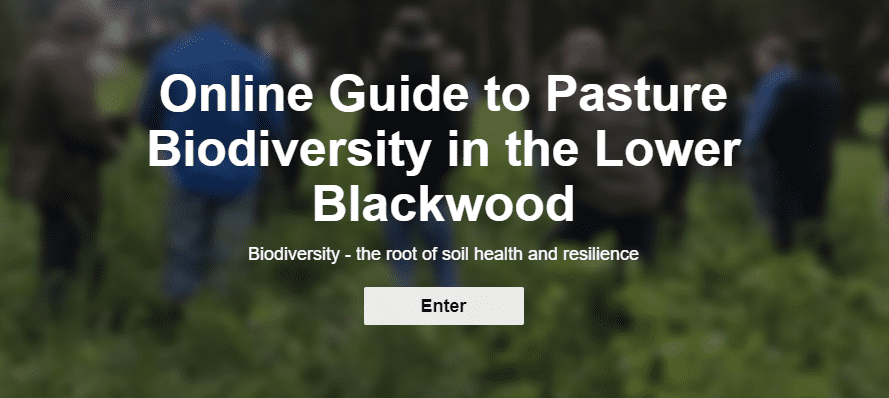
Demonstration Farm Site Profiles and Case Study Analysis
Tune In to the Project Podcasts & Webinar
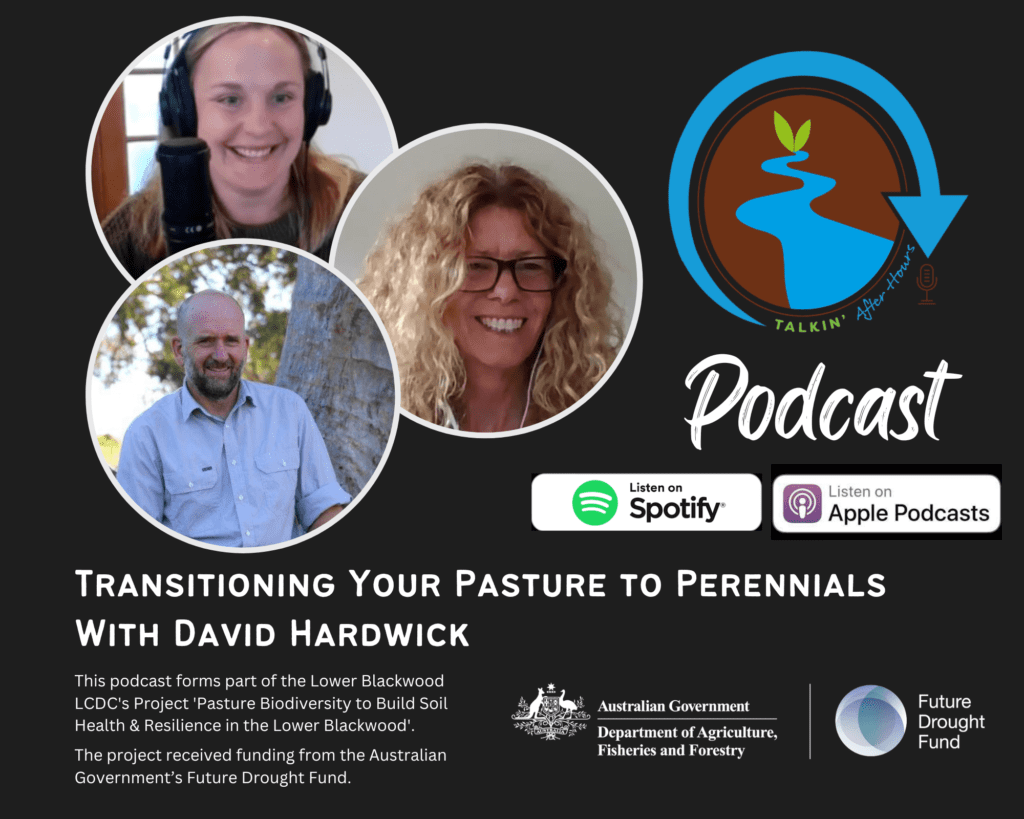

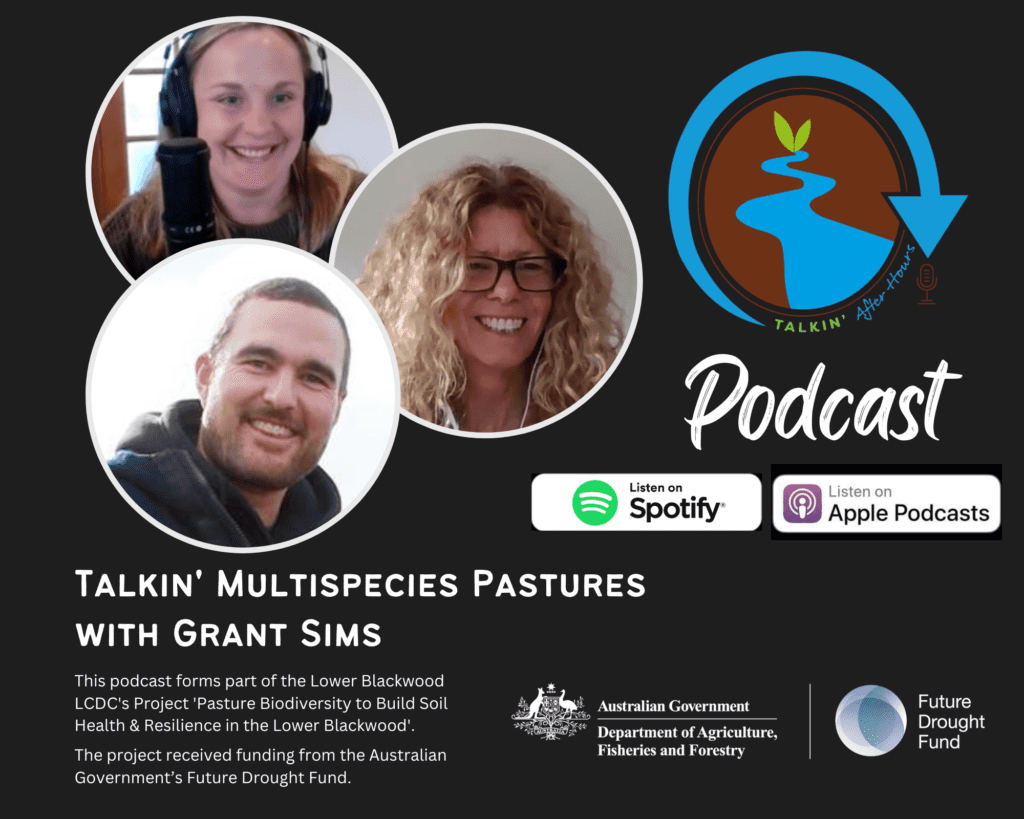

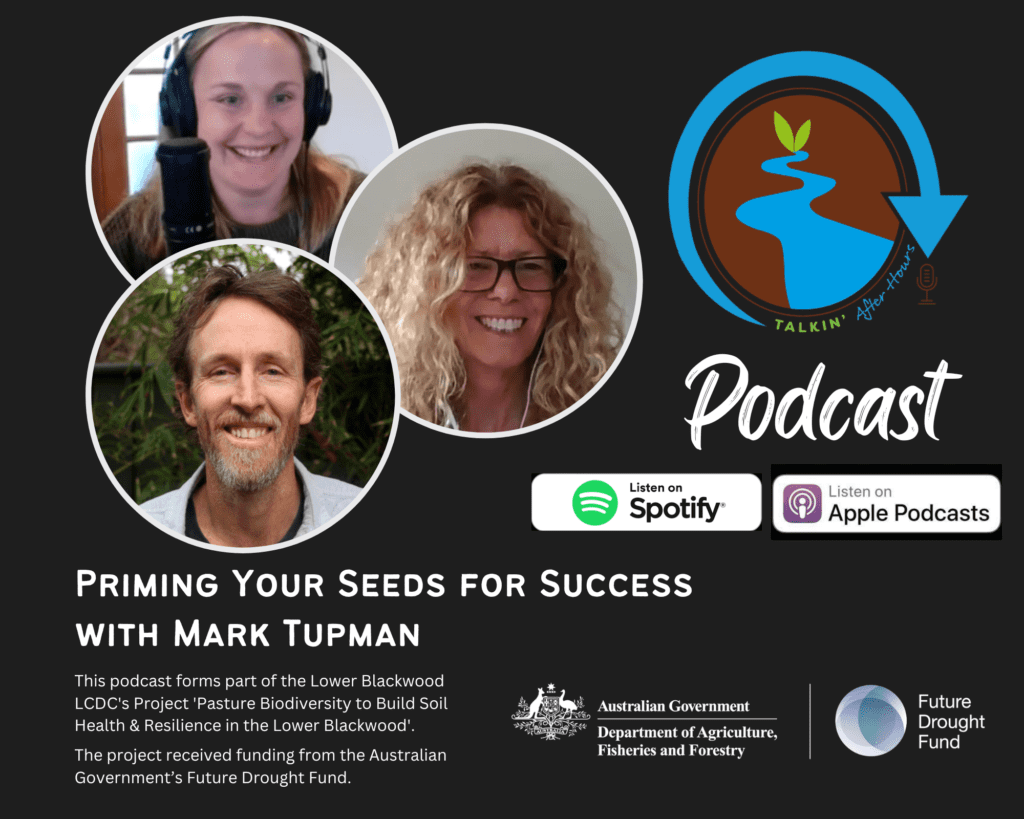



This 18 month project has been designed to demonstrate the efficacy of multi species cover crops and perennial pasture plants as a means to improve farm drought resilience in the Lower Blackwood catchment .
The project includes a series of practical workshops, supported by on site demonstrations at separate farm locations within the catchment. The demonstrations will be crucial in giving a necessary local context, & will provide evidence that the information delivered in the workshops is applicable & achievable with the soils & climate of the catchment. The workshops & demonstrations will show how the use of biostimulants, multispecies cover cropping & perennial pastures work to build soil biodiversity, increase levels of soil carbon, & improve water holding capacity.
The knowledge and information gained from the workshops & demonstrations will be preserved & enhanced for future reference by the development of related Case Studies, podcasts, and an online guide to improving soil health and resilience in the catchment.
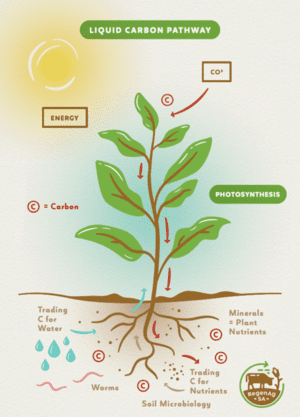

Every plant exudes its own unique blend of sugars, enzymes, phenols, amino acids, nucleic acids, auxins, gibberellins and other biological compounds, many of which act as signals to soil microbes.
Root exudates vary continuously over time, depending on the plant’s immediate requirements. The greater the diversity of plants, the greater the diversity of microbes and the more robust the soil ecosystem.
Light Farming – Dr Christine Jones 2018
The Project Activities
What?
Activity 1: Demonstration Sites Selection & Planning:
3 x 1ha sites will be selected at three separate locations in the catchment. Baseline data soil testing will be undertaken (chemical, physical & biological) and a demonstration plan created (including species selection, seeding ratios, seeding timing)
Activity 2: 2 x 3 Demonstration Site Seeding:
All sites will be seeded with multispecies cool or warm season cover crops & perennial pasture species on 2 separate sequential occasions. Biostimulants will be used to inoculate the seed prior to seeding & the seeding will be undertaken with biostimulant soil injection to enhance germination success.
Activity 3: Site Monitoring, Management, & Data Collection
Seeded areas will be monitored throughout the growing season, & when/if required biological amendments will be applied as foliar applications to support growth. Field analysis & pasture cuts will be undertaken to capture data on yield & pasture quality. Adaptive (Managed) Grazing will be used to manage growth and to prepare sites for seeding. A final soil analysis will be undertaken to compare with baseline data taken at the commencement of the program.
Activity 4: Field Day Workshops
During the workshops and field walks, participants will learn in detail what needs to planned for when seeding, how to analyse the soil’s physical condition and assess the impact the autumn / spring cover crop has had on soil function. The final workshop will also present results on any changes to soil condition, the results of pasture cuts, & overall pasture condition & vigour.
Activity 5: Workshop – Primers for soil health and building biodiversity.
The workshop will provide participants with an understanding of the role and benefits of soil microbes and how living plants support microbial activity.
Activity 6: Develop material for inclusion in the Lower Blackwood Regenerative Agriculture Knowledge Hub.
- 3 x Farmer profiles & case studies
- 3 x podcasts
- 3 x Building Soil Health & Biodiversity Podcasts with regenerative ag soil health experts
- 1 x Lower Blackwood Guide to Building Soil Health & Biodiversity
Want to know more about this great project?
Contact our Project Officer: Kate Tarrant, E: [email protected] | M: 0409 203056
This project received funding from the Australian Government’s Future Drought Fund.


